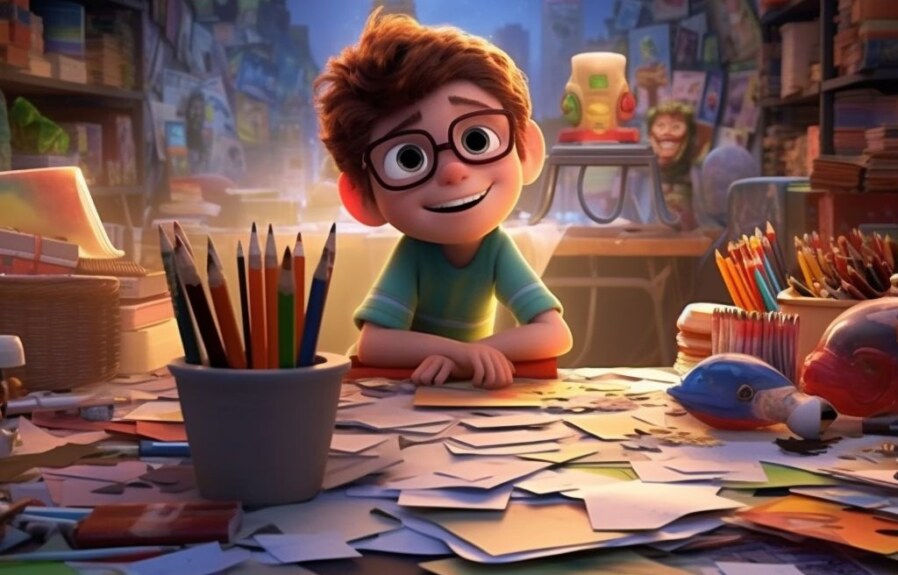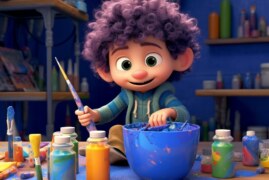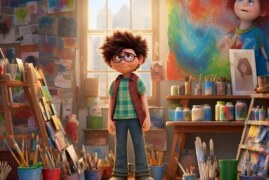Drawing is an art form that has captivated people for centuries. The ability to put a pencil to paper and create something entirely unique is a skill that is both empowering and rewarding. Whether you are an absolute beginner or an experienced artist, there is always something new to learn when it comes to drawing. In this article, we will explore the basics of how to start drawing, from selecting the right materials to practicing illustration techniques. By the end of this guide, you’ll be well on your way to unlocking your inner artist and producing beautiful drawings that you can be proud of.
1. Choosing the right drawing supplies for beginners
Choosing the right drawing supplies as a beginner can be a daunting task, especially with the wide array of options available in the market. However, selecting the right materials is crucial to enable beginners to produce the best artworks. The following are some factors to consider when selecting drawing supplies as a beginner.
1. Budget: As a beginner, it is crucial to choose supplies that fit your budget. You can start with inexpensive materials and upgrade later as you improve your skills.
2. Quality: While cost is an important factor, it is essential to choose high-quality materials as they will not only produce better results but will also last longer.
3. Purpose: Consider what you intend to use the drawing supplies for. Are you working on a particular project or just learning? This will help you choose the appropriate supplies.
4. Personal preference: Everyone has their unique style and preferences when it comes to drawing supplies. Experiment with various materials to find out what works best for you.
5. Durability: Choose materials that are durable and can withstand regular use.
In summary, choosing the right drawing supplies as a beginner is crucial. Consider your budget, quality of materials, purpose, personal preference, and durability when selecting the materials. Always opt for high-quality materials that will produce the best results and last long.
2. Drawing exercises to improve your skills
Drawing is a skill that can be improved with practice. If you’re looking to enhance your drawing abilities, there are some exercises you can do to help develop your skills. Here are some drawing exercises you can try:
1. Gesture drawing: This technique involves quickly drawing the basic shapes of a subject to capture its movement and gesture. It helps to improve your hand-eye coordination and observation skills.
2. Drawing from observation: This exercise involves drawing from real-life objects or scenes, rather than from your imagination. It helps to improve your understanding of perspective, proportion and composition.
3. Blind contour drawing: This technique involves drawing the outline of a subject without looking at your paper. It helps to improve your hand-eye coordination and your ability to see and record detail.
4. Drawing exercises with limited time: This method involves setting a timer and drawing a subject within a set time limit, such as 30 seconds or one minute. It helps to improve your speed and accuracy, as well as your ability to simplify forms.
5. Drawing upside down: This exercise involves drawing an upside-down image of a subject, which helps to improve your ability to see shapes and values without interpreting them.
Remember, the key to improving your drawing skills is to practice regularly. These exercises can help to develop your skills and boost your confidence, but it takes time and patience to see progress. Keep practicing, and you’ll see improvement.
3. Finding inspiration for your drawings
As an artist, it’s easy to become overwhelmed with the pressure to create something new and unique with every piece. It’s natural to experience periods of creative block or to feel uninspired. If you’re struggling to find inspiration for your drawings, try these tips:
1. Explore your surroundings: Take a walk outside and observe the world around you. Look at the colors, shapes, and textures of nature. Pay attention to the details of buildings, people, and objects. Take pictures or make sketches of anything that catches your eye.
2. Experiment with different mediums: Try using a medium or tool that you haven’t used before. This can help you break out of your comfort zone and challenge yourself to create in a new way. For example, if you usually draw with pencil, try using charcoal, pastels, or ink.
3. Look to other artists: Browse art blogs, social media, or galleries to see what other artists are creating. Take note of what you admire and try to incorporate those elements into your own work. Remember to stay true to your own style and voice.
4. Keep a sketchbook: Carry a sketchbook with you at all times and use it to capture ideas, sketches, and notes. This can help you develop a practice of observing and recording the world around you, and can also serve as a resource for future projects.
5. Collaborate with others: Work with other artists or creative individuals to share ideas, techniques, and inspiration. Collaborating with others can help you see things from a different perspective and push your creativity in new directions.
Incorporating these practices into your creative routine can help you find inspiration for your drawings and break through periods of creative block. Remember that inspiration can come from anywhere, and it’s important to stay open, curious, and willing to experiment.
4. Understanding basic composition and perspective
is key to creating visually appealing and well-balanced artwork. Composition refers to the arrangement of elements within a piece, and perspective involves creating the illusion of three-dimensional space on a two-dimensional surface.
To achieve effective composition, it’s important to consider the placement and size of objects, the use of negative space, and the use of lines and shapes to guide the viewer’s eye. One common rule of composition is the rule of thirds, which involves dividing the frame into thirds and placing important elements along these lines or points.
Perspective can be achieved through techniques such as overlapping, size variation, and shading. It’s important to consider how objects appear in the foreground, middle ground, and background, and to use these differences to create a sense of depth and space in the piece.
Here are some tips for improving composition and perspective in your artwork:
– Experiment with different compositions before committing to a final piece
– Use the rule of thirds as a guide, but don’t be afraid to break the rules for creative effect
– Vary the size and placement of objects to create visual interest
– Use overlapping and size variation to create a sense of depth and space
– Utilize shading and perspective techniques to create the illusion of three-dimensional space.
By implementing these tips and techniques, you can elevate your artwork to the next level and create pieces that are visually captivating and well-balanced.
5. Tips for overcoming artistic blocks and staying motivated
As an artist, you might often encounter creative blocks that prevent you from moving forward with your work. These blocks can be frustrating and demotivating, but don’t worry! We’ve compiled a list of tips to help you overcome artistic blocks and stay motivated.
1. Take a break – Give yourself some time off to clear your mind and relax. This can help you come back to your work refreshed and with a new perspective.
2. Try something new – Experiment with a new medium or technique to break out of your routine and stimulate your creativity.
3. Keep a sketchbook – Jot down your ideas and sketches in a notebook. This can help you organize your thoughts and inspire new ideas.
4. Collaborate with others – Working with other artists can bring fresh perspectives and ideas to your work. Consider joining a creative group or seeking out a mentor.
5. Be kind to yourself – Remember that artistic blocks are a natural part of the creative process. Don’t be too hard on yourself and give yourself time to work through them.
By implementing these tips, you can overcome artistic blocks and stay motivated in your artistic journey. Remember to stay curious, be patient with yourself, and keep creating!
6. Seeking feedback and learning from critiques
When it comes to improving our skills and work, getting feedback and critiques from others can be incredibly valuable. It can help us see areas where we may be falling short, discover blind spots we didn’t even know we had, and gain a fresh perspective on our work. However, it’s important to approach feedback and critiques with an open mind and a willingness to learn, rather than becoming defensive or dismissive.
Here are some tips for :
1. Seek out constructive criticism: Not all feedback is created equal. Look for people who will give you specific, actionable feedback that can help you improve. Avoid those who are overly critical or simply belittle your work without offering any constructive suggestions.
2. Listen with an open mind: It can be tough to hear criticism of your work, but it’s important to listen without becoming defensive. Try to separate your self-worth from your work and remember that critiques are not a reflection of who you are as a person.
3. Ask questions and seek clarification: If you’re unsure about something in the feedback, don’t be afraid to ask follow-up questions or seek clarification. This can help you better understand the critique and how to apply it to your work.
4. Take action: Once you have feedback and critiques, it’s important to take action on what you’ve learned. Use it as an opportunity to improve your skills and make your work better. Don’t just dismiss the feedback or let it fall by the wayside.
By , you can continue to grow and improve as a professional. Remember, everyone has blind spots and areas where they can improve, so embrace feedback as a valuable tool in your personal and professional development.
7. Building a daily drawing practice and tracking your progress
Developing a daily drawing habit is a great way to get better at your craft and track your progress. Here are some tips on :
1. Set aside a specific time and place for daily drawing. This could be early in the morning, during your lunch break, or right before bed. It doesn’t matter when you do it, as long as you do it consistently.
2. Use a sketchbook or digital drawing app to record your daily drawings. This will allow you to easily track your progress and look back on your work.
3. Experiment with different techniques and subject matter. Don’t be afraid to try new things and push yourself out of your comfort zone. This will help you grow as an artist and keep your daily drawing practice interesting.
4. Share your work online or with friends and family. Getting feedback and encouragement from others can be a great motivator to keep going.
5. Don’t get discouraged if you miss a day or don’t like what you’ve drawn. Remember that the point of a daily drawing practice is to improve over time, not to be perfect every day.
By , you’ll be able to see how far you’ve come and continue to grow as an artist. Give it a try and see what you can accomplish!
People Also Ask
What are the basic materials for drawing?
The basic materials for drawing include paper, pencils, erasers, sharpeners, and rulers. Other materials such as charcoal, colored pencils, and markers can also be used.
What are some beginner drawing exercises?
Beginner drawing exercises include sketching basic shapes, drawing from life, using reference images, and practicing line control and shading.
Should I take drawing classes?
Taking drawing classes can be beneficial for beginners as they can provide guidance, feedback, and a structured learning environment. However, it is possible to learn to draw on your own through online tutorials and practice.
What is the best way to practice drawing?
The best way to practice drawing is to draw regularly, even for short periods of time. It’s also important to challenge yourself by trying new subjects and techniques and seeking feedback from others.
How long does it take to get good at drawing?
Becoming proficient at drawing can take a significant amount of time and practice. However, improvement can be seen with consistent practice and dedication.
Conclusion
Learning how to start drawing can seem daunting, but it doesn’t have to be. Starting with basic materials and exercises, practicing regularly, and seeking feedback and guidance can help beginners improve their skills and gain confidence. With time and dedication, anyone can become proficient at drawing.



